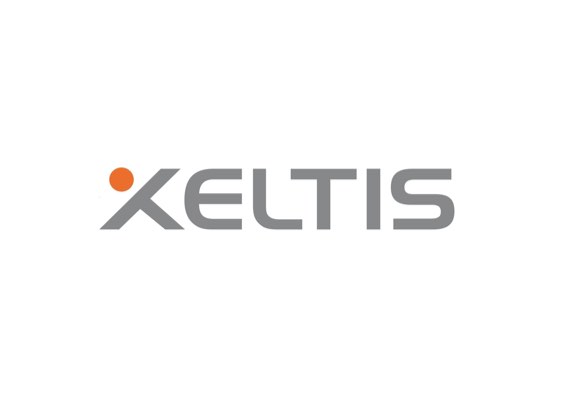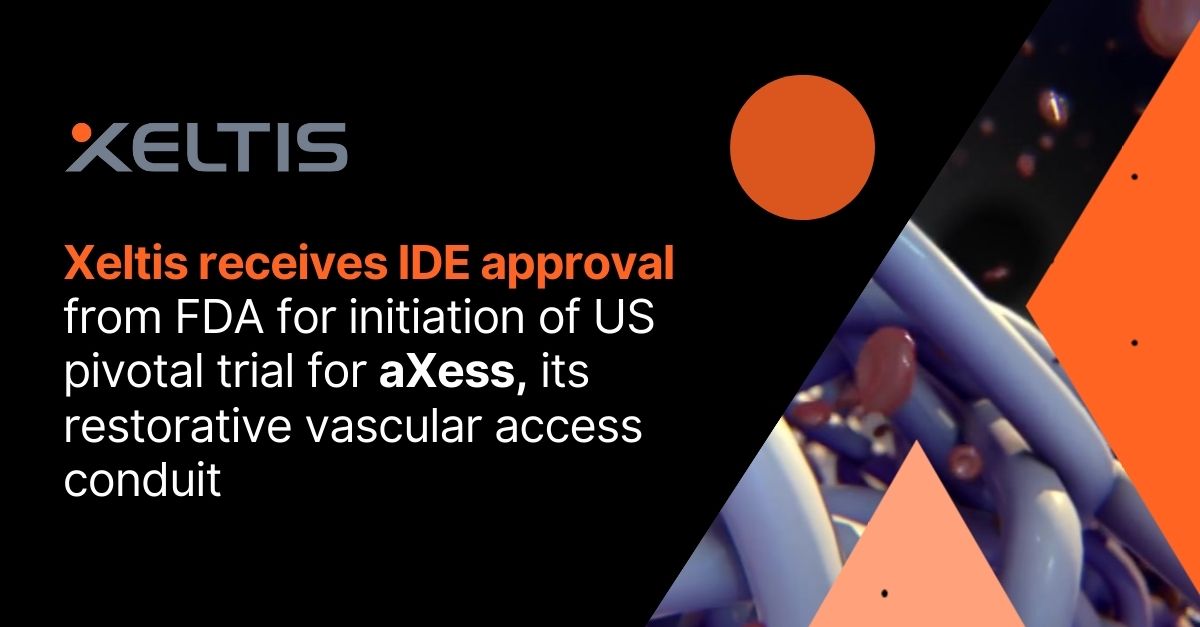27 April 2022
Xeltis’ clinical study with restorative hemodialysis access graft, aXess, shows promising early puncturing, patency and safety data

International pivotal trial expedited to potentially revolutionize hemodialysis treatment with an immediate and durable solution
EINDHOVEN, The Netherlands/ZURICH, Switzerland – April 27, 2022 – Xeltis, a medtech company developing the most advanced polymer-based restorative cardiovascular devices, today announced preliminary results from a clinical trial of its restorative hemodialysis access graft, aXess, which showed very promising early puncturing, patency and safety data. aXess is a synthetic, biocompatible blood vessel, which, overtime, turns into a living vessel made of patient’s own tissue. The data, from the ongoing first-in-human aXess trial, will be presented at CX 2022, the Charing Cross International Symposium on Vascular and Endovascular Challenges, in London for the first time today.
To date, the aXess graft has been implanted in 11 patients, with a median follow-up of 6.5 months. Overall, more than 600 dialysis sessions have been enabled in this patient group, with puncturing – or dialysis initiation, starting as early as two weeks after implant in some patients. Preliminary data analysis shows very promising outcomes on primary endpoints. The current data show 100 percent functional patency and safety, with no aneurysms or infections reported, and excellent ease of use for surgeons and dialysis nurses.
“Our first clinical experience using the aXess device is extremely encouraging. This fully synthetic graft is easy to implant, can be promptly punctured and exhibits an excellent safety profile,” explained Professor Matteo Tozzi, University of Insubria, Varese (Italy), the aXess trial investigator who presented the data at CX 2022. “Its potential to turn into a longer-lasting natural vessel is an additional benefit and suggests that an optimal solution for dialysis patients may be within our reach.”
The aXess graft enables early puncturing, working like some of currently available ePTFE synthetic hemodialysis access grafts. However, it is also designed to turn into a patient’s own living blood vessel, like an arteriovenus fistula. Once implanted, its biocompatible, porous micro-structure gets naturally colonized by the patient’s own tissue, which overtime takes over functionality before the original device absorbs in the body. This process is called endogenous tissue restoration (ETR).
“At a time when fistula is being challenged as a first-line treatment in a number of dialysis patients, the first-ever clinical data for aXess are particularly significant and aligned with its remarkable and unprecedented positive results from preclinical trials, showing its full endothelialization,” said Professor Frans Moll, University Medical Center, Utrecht (The Netherlands), who will present data on aXess preclinical developments at CX 2022.
“The early outcomes from our aXess trial are very promising, so we have decided to expedite the development of this revolutionary restorative device with an international pivotal trial starting this year, with the aim to reach patients who need hemodialysis as soon as possible,” said Eliane Schutte, Xeltis CEO.
About Hemodialysis
Chronic Kidney Disease (CKD) affects nine percent of the population, with growing prevalence due to cardiovascular disease (diabetes, hypertension, obesity).1 Today, CKD accounts for more deaths than breast and prostate cancers combined. Each year, three million patients with chronic kidney disease need hemodialysis and require vascular access to connect to a dialysis machine. Today, patients with kidney failure may wait for months, or in vain, for fistula maturation to access dialysis or use synthetic grafts that have limited durability and are prone to clotting and infections.2,3
About the aXess Graft
The Xeltis aXess graft is a restorative, synthetic, biocompatible and absorbable electrospun blood vessel for arteriovenous hemodialysis access, overtime turning into a living vessel made of patient’s own tissue. aXess combines a potentially longer lasting and readily available vascular access of suitable dialysis size, turned into a living, natural graft made of patient’s own tissue. In preclinical trials, aXess has been shown to successfully turn into a functional, living 20 cm long graft in one-year.4 The preclinical trial data also showed improved healing compared to commercially available synthetic grafts ePTFE.3
About Xeltis
A clinical-stage medical device company, Xeltis has developed the most advanced polymer-based restorative devices for cardiovascular treatment. Xeltis’ restorative devices include implantable pulmonary heart valves, currently in a pivotal clinical study, as well as small diameter blood vessels for hemodialysis vascular access and coronary artery bypass graft (CABG) surgery.
Xeltis was formed through the merger of two Dutch/Swiss university spin-offs and it currently has operations in The Netherlands and in the USA. Xeltis’ investors include venture capital funds Kurma Partners, EQT Life Sciences, VI Partners and Ysios Capital as well as a number of private investors. The company recently secured a €15 million financing from the European Investment Bank and a €15 million funding from the European Innovation Council Accelerator (EIC) set up by the European Commission.
CAUTION: The Xeltis technology is an investigational device and NOT approved for sale.
Contact
Xeltis
Laura Bertossi Monti
+44 75544 25402
laura.monti@xeltis.com



